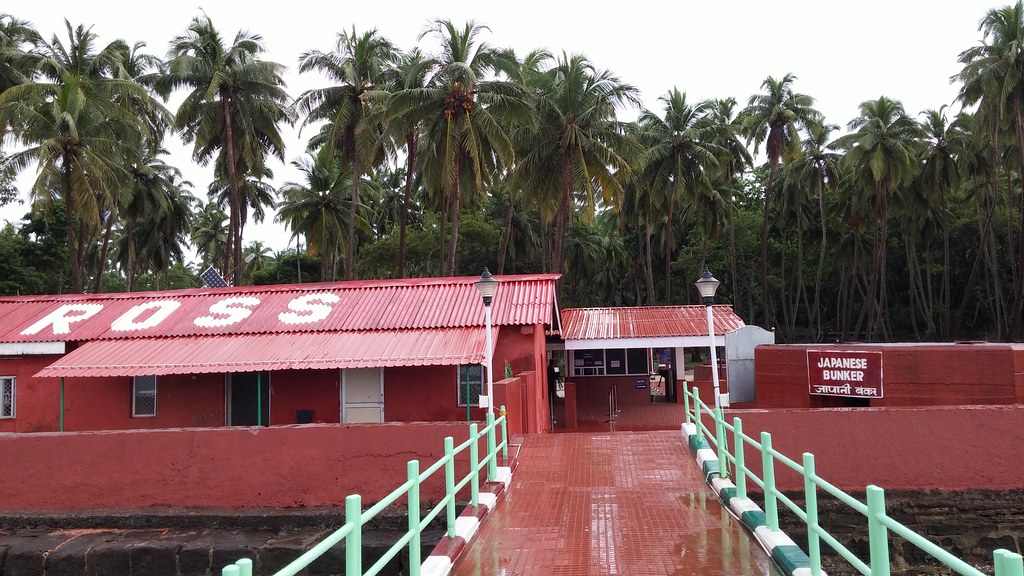
Cellular Jail-Andaman & Nicobar Islands Overview, History of Cellular Jail Andaman
The Cellular Jail, otherwise called ‘Kala Pani’ is an old pioneer jail arranged in Port Blair, the capital of Andaman and Nicobar islands. Developed by the Britishers during their provincial guideline in India, the prison was used particularly to banish Indian political detainees. The development of the prison started in the year 1896 and was finished in 1906, after which it was utilized to house numerous striking political dissidents such as Batukeshwar Dutt, Yogendra Shukla and Vinayak Damodar Savarkar. The prison complex is presently claimed by the Government of India and it is perceived as the public remembrance landmark that grandstands the life of detainees during the British time.
Long after the Sepoy Mutiny in the year 1857, the British started using the islands of Andaman and Nicobar as correctional facilities to detain the rebels. The isolated islands were picked because of their inaccessible area from the Indian terrain. During the freedom development of India, a huge number of Indians were detained in the Cellular Jail; a considerable lot of them kicked the bucket because of unfeeling conditions, much more were hanged, and many died because of mature age.
Today, the Cellular Jail is a grave token of the relative multitude of battles the Indian political dissidents attempted while battling for autonomy, and is a basic piece of India’s set of experiences. The Jail today remains a conspicuous vacation spot in the Andaman and Nicobar Islands where guests can find out about its set of experiences and furthermore appreciate a light show held in memory of the multitude of detainees who were detained here.

History of Cellular Jail Andaman
The Cellular Jail is perhaps the murkiest part throughout the entire existence of the pioneer rule in India. Despite the fact that the jail complex itself was built somewhere in the range of 1896 and 1906, the British had been utilizing the Andaman islands as a jail since the days in the quick fallout of the principal battle of freedom.
Soon after the disobedience was squashed, the British sent thousands to the scaffold, hung them up from trees, or attached them to guns and exploded them. The individuals who endure were banished for life to the Andamans to cut off their associations with their families and their nation. 200 rebels were moved to the islands under the authority of the guard David Barry and Major James Pattison Walker, a military specialist who had been superintendent of the jail at Agra. Another 733 from Karachi showed up in April, 1868. More detainees showed up from India and Burma as the settlement grew. Anyone who had a place with the Mughal illustrious family, or who had sent a request to Bahadur Shah Zafar during the Rebellion was obligated to be extradited to the islands.
Development of the prison began in 1896 and ended in 1906. The first structure was a paved-shed block building. The blocks used to forge the structure were brought from Burma, now called Myanmar.

A wing of the Cellular Jail. Additionally demonstrated is the focal pinnacle with a conelike rooftop. The structure had seven wings, at the focal point of which a pinnacle filled in as the convergence and was utilized by watchmen to keep watch on the detainees. The wings emanated from the pinnacle in straight lines, much like the spokes of a bike wheel. A huge ringer was kept in the pinnacle to bring the alert up in any inevitability.
Every one of the seven wings had three stories upon finishing. There were no quarters and an aggregate of 698 cells. Each cell is 4.5 m x 2.7 m or 15 x 8 ft in size with a ventilator located at a height of three meters. The name, “cell prison”, got from the lone cells which kept any detainee from speaking with some other. They were all in isolation.
The Empire of Japan attacked the Andaman islands in 1942 and drove the British out. The Cellular Jail at that point got home to British detainees. During this period, Subhash Chandra Bose additionally visited the islands. Two out of the seven wings of the Jail were annihilated during the Japanese system. In 1945, the British continued control with the finish of World War II.

| HOME | ABOUT | ANDAMAN TOUR | CONTACT | REVIEWS |
| Domestic | ||||
| Andaman-Tour | Andaman-Tour-Packages | Goa Packages | Golden Triangle Packages | Himachal Packages |
| Honeymoon Packages | Kashmir Packages | Kerala Packages | North East Packages | Pilgrimage Packages |
| Top Deals | ||||
| Andaman Holidays For Honeymooners | Beautiful – Andaman – with – Havelock – And – Neil | Beautiful – Journey – To – Andaman | Andaman Honeymoon Tour Package 7N-8Days | Andaman Honeymoon Tour Package 8N-9Days |
| Adventure – Andaman – With – Havelock – And – Neil/ | Amazing – Holidays – In – Andaman/ | Andaman – Delight – Beautiful – Journey/ | Andaman – Honeymoon – Delight/ | Andaman – Paradise On – Earth |
General information
07872000098 / 09933201302
Recent Posts
Radhanagar Beach: Havelock द्वीप का स्वर्ग
Andaman Tourism: एक यात्रा का नया अनुभव 2024
Tags

Thailand





